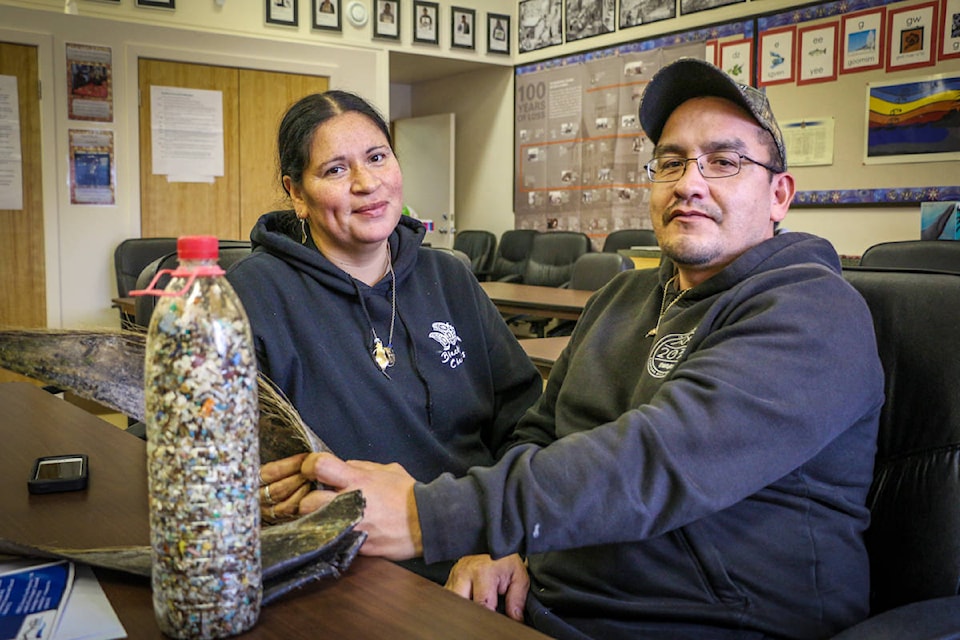For three years, two Gitga’at whale researchers have collected data in Caamano Sound, where they have discovered the shocking amount of plastic on remote beaches.
“It’s all littered. It’s incredibly disgusting. Every beach must have hundreds and hundreds of plastic bottles and other plastic debris,” Nicole Robinson said.
Robinson and her husband Archie Dundas spend three months a year living in a cabin on Rennison Island, where they monitor marine activity in Caamano Sound. Last week, they presented their work to students at Charles Hays Secondary School and Prince Rupert Middle School, and then to teachers at Wap Sigatgyet, the Aboriginal education department for the school district.
“We record everything that moves but bugs,” Robinson said, next to Dundas who used to be a Guardian Watchman for the Gitga’at Nation. Originally, it was the watchmen who went out to monitor the area around Rennison Island, but in 2015, Robinson approached the band and requested that the two of them take over the duty.
“I put the proposal forward. This is our third year and we absolutely love it,” she said.
Their work isn’t limited to cetaceans. They observe boats, and as part of their program they approach vessels to inform them on the importance of keeping a distance from cetaceans and being more whale wise.
READ MORE:
They also collect data on crab traps, monitor abalone stocks and where spring salmon are coming from.
On Nov. 24, they spoke with teachers on how they collect data, how to ID humpback whales and killer whales, and what their day-to-day life is like on Rennison Island.
Robinson’s sister, Tina Demings, a program resource teacher for School District 52, suggested having the whale researchers come to Prince Rupert and speak with the students.
James Zlatanov, an Aboriginal helping teacher for the high school and middle school, was at the session. He said the two researchers will help make the units on the Great Bear Sea and First Nations science more real to students.
“Kids always ask ‘Why are we learning this?’ But this is happening right now. They’re doing the work,” Zlatanov said.
One message the researchers left with the students was to think more about recycling. The plastic they’re finding on the beaches isn’t just from the 2011 Japanese tsunami, it’s from all over the world. Many of the trash they find is plastic bottles, flip flops, styrofoam, toothbrushes and lighters.
“We’ve been monitoring one area specifically on Moore Islands, near petroglyphs, and we’ve been monitoring it for three years. When we first started it was about a foot deep and now it’s almost three feet deep of small what they call microplastics. Archie bottled some up this year,” Robinson said.
The man of few words held up a two-litre plastic bottle filled with small pieces of plastic to demonstrate what they’re finding on remote beaches on the North Coast.
“It looks like sand but it’s not sand, it’s all plastics,” Robinson said.
Video of microplastics contributed by Archie Dundas
shannon.lough@thenorthernview.com
Like us on and follow us on



